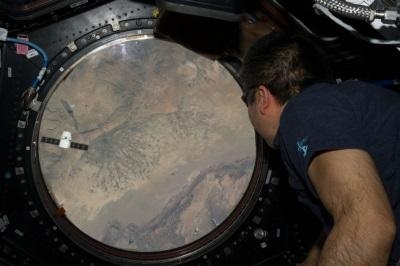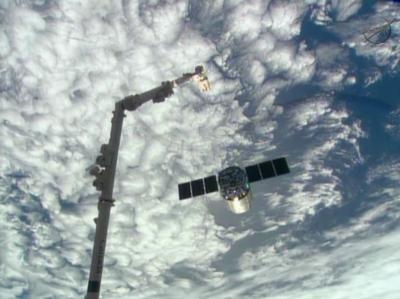Closes The Books On Development Of Commercial ISS Re-Supply Program
With two companies now providing commercial cargo launch services for the International Space Station, NASA is issuing its final report on the now-complete Commercial Orbital Transportation Services (COTS) program that laid the groundwork for those flights.

The report, titled “Commercial Orbital Transportation Services, A New Era in Spaceflight” (NASA/SP-2014-617), documents the work of NASA’s Commercial Crew & Cargo Program Office (C3PO) between 2005 and 2013 to partner with private industry to take over more routine operations in low-Earth orbit. This move toward more cooperative engagement with industry partners allowed NASA to focus more on scientific research, technology development and exploration goals.
The effort represented the culmination of years, even decades, of initiatives to encourage the growth of the private spaceflight sector in the U.S. Similar relationships have been used throughout U.S. history, such as the 1925 Contract Air Mail Act that provided incentives for commercial aviation by allowing the U.S. Post Office to contract with private companies.
Commercial companies have been involved in NASA programs as contractors since NASA’s founding in 1958. In the 1980s the agency began actively to study ways to turn over routine space operations to the private sector. The planned retirement of the space shuttle, announced in 2004, accelerated these efforts and led to establishment of the COTS program.

Under COTS partnerships, two companies -- Space Exploration Technologies (SpaceX) of Hawthorne, California, and Orbital Services Corp. of Dulles, Virginia – developed and demonstrated capabilities to transport cargo to low-Earth orbit.
Because these were partnerships, not traditional contracts, NASA leveraged its $800M COTS program budget with partner funds. This resulted in two new U.S. medium-class launch vehicles and two automated cargo spacecraft and demonstrated the efficiency of such partnerships.
In 2008, NASA began the transition from partner to customer by awarding two contracts -- one to Orbital and one to SpaceX -- for commercial resupply services to the space station. At the time of award, NASA ordered eight flights from Orbital valued at about $1.9 billion and 12 flights from SpaceX valued at about $1.6 billion.
SpaceX’s Dragon became the first commercial vehicle to fly cargo to the space station under a commercial cargo contract with NASA in October 2012 and was followed by Orbital’s Cygnus spacecraft in January 2014. So far, SpaceX has flown three successful cargo delivery missions, and Orbital is ready to launch its second this summer.
The final report chronicles the historical foundations of the COTS program, how NASA selected and supported its partners, the partners’ COTS development and demonstration efforts and the evolution of COTS into both the Commercial Cargo Service contracts and NASA’s Commercial Crew Program.
(Images provided by NASA. Dragon (top) and Cygnus (bottom) COTS spacecraft at ISS)
 Classic Aero-TV: Remembering Bob Hoover
Classic Aero-TV: Remembering Bob Hoover ANN FAQ: Follow Us On Instagram!
ANN FAQ: Follow Us On Instagram! ANN's Daily Aero-Linx (05.15.24)
ANN's Daily Aero-Linx (05.15.24) ANN's Daily Aero-Term (05.15.24):Altimeter Setting
ANN's Daily Aero-Term (05.15.24):Altimeter Setting Aero-News: Quote of the Day (05.16.24)
Aero-News: Quote of the Day (05.16.24)




